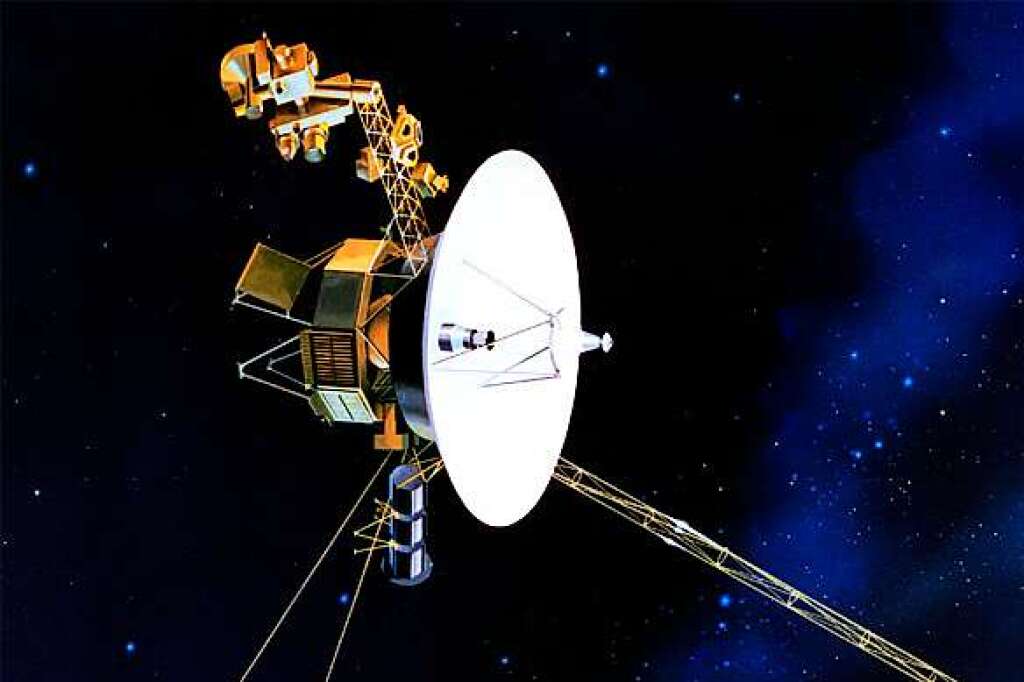NASA’s Voyager probes are the most distant human-made object. After decades of travel, they are starting to weaken. Is the mission nearing its end?
Far, Far, Voyager: Man-made objects have never traveled as far from Earth as these twin probes from NASA. Voyager 1 and Voyager 2 have been on the move for about 45 years. Since then, both have left the heliosphere and entered areas that had not been explored by spacecraft before.
But the longest flight in space history appears to be drawing to a close: Although both unmanned probes are still flying and continue to send data, the NASA scientists responsible have already grounded several onboard instruments in the past three years in order to extend The remaining. energy. The power of the sensors is decreasing year by year – and engineers have to adapt to it. To do this, they often have to read decades-old documents or contact long-retired NASA engineers.
Sensors provide unreliable data
With Voyager 1, scientists are also currently having a data problem. Although the probe is operating normally, the control system displays completely different data. “Such a puzzle is not surprising at this point in the mission,” said lead scientist Susan Dodd. “The two probes are about 45 years old, which is much older than mission planners ever expected. We are outside the heliosphere — a highly radioactive environment in which no spacecraft has ever flown. So for engineers, there are major challenges.”
Originally, the Voyager (German: traveller) mission of “two cosmic astronauts”, considered one of the most successful projects in NASA history, was designed for four years. Voyager 2 was launched on August 20, 1977, followed shortly thereafter by Voyager 1 on September 5, 1977.
Both probes, each weighing about one ton, met with Jupiter and Saturn, while Voyager 2 visited Uranus and Neptune. The probes also studied nearly 50 satellites. They sent stunning images of Jupiter’s atmosphere, active volcanoes on Jupiter’s moon Io, and Saturn’s rings. The duo is powered by long-life plutonium generators.
About 20 billion kilometers from the Earth
Voyager 1 is now located more than 23 billion km from Earth, farther than any other spacecraft, while Voyager 2 is about 20 billion km away. In 2012, Voyager 1 became the first spacecraft in human history to leave the solar system. Thanks to its previous launch, Voyager 2 is the longest continuously operating spacecraft. In 2018, Voyager 2 also left the heliopause of the sun.
However, there are different definitions of the limits of the solar system. Often equal to the edge of the solar sphere, it is a type of bubble in interstellar space that is formed largely by the solar wind. According to other experts, the boundary is farther and lies behind the so-called Oort Cloud, a group of small objects that, despite the huge distance, are still under the influence of the Sun’s gravity.
“Our energy budgets are getting tighter, but our team assumes we can continue science for at least five more years,” the probe recently announced via its Twitter SMS. “Maybe we will be able to celebrate our 50th anniversary or even work in the 2030s.”
Traveling at tens of thousands of kilometers per hour
Even if they are silent, the tentacles will continue to fly. They are currently traveling through the Milky Way at about 61,000 kilometers per hour (Voyager 1) and about 55,000 kilometers per hour (Voyager 2). In their luggage, they have, among other things, music by rock and roll legend Chuck Berry, as well as classical music of Bach, Mozart and Beethoven, as well as sounds from countries such as Australia, Bulgaria, Japan and Peru, as well as 115 images and tributes to possible aliens in 55 languages different.
“It’s hard to see the end coming,” scientist Alan Cummings, who has been tracking the probes for decades, told Scientific American. “But we did great things.”




More Stories
Nvidia GeForce RTX 4090: AIDA64 gets Ada spearhead support
Rogue Trader – Details about the first cRPG in the series – CD-Action
t3n – Digital Pioneers | digital business magazine